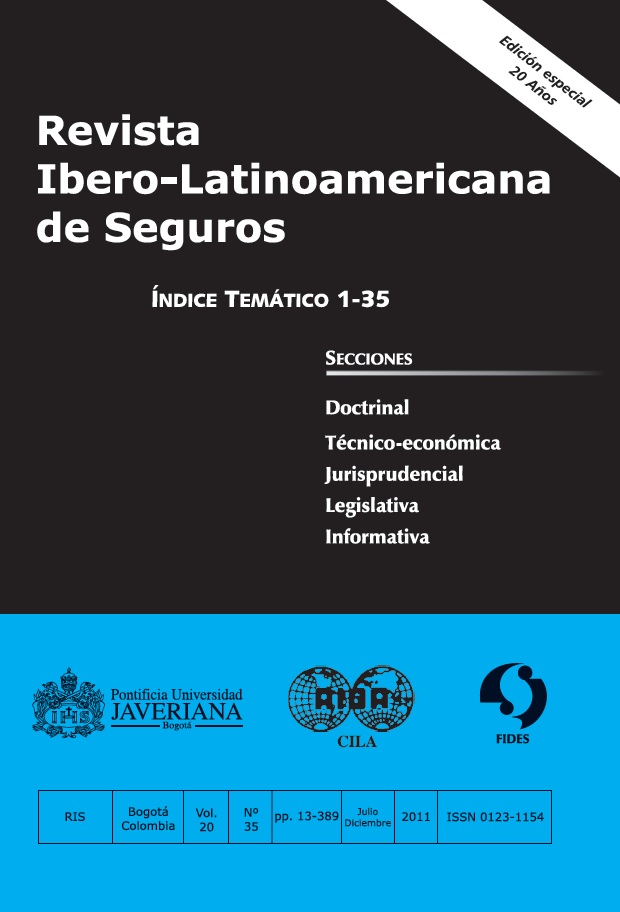Modelos estadísticos para los costos en carteras colectivas de Seguros de salud
##plugins.themes.bootstrap3.article.details##
The aim of this analysis is to use risk factors in a model to analyze claim severity data. Pure premium calculation is usually based on the prediction of the expected claim frequency multiplied by the average loss. Typically, risk factors have been used by insurance companies for modeling expected claim frequency by using regression models or by segmenting the portfolio of insured risk groups. This paper analyzes the behavior of loss cost in health insurance portfolios by using a causal model designed to assess the influence of factors such as age and sex not only in the expected number of accidents but also in the claim cost. The methodology is based on generalized linear models with additive or multiplicative interaction between the rating factors.
We conclude that both age and sex are risk factors with significant influence in Health Care and Medical Insurance allowing better prediction of the severity of the incident instead of averaging the cost for all policyholders. The next goal is to investigate how to integrate models of frequency and severity simultaneously.
health insurance, claims severity, pricing, Statistical models, Health insuranceSeguros de salud, severidad de los siniestros, tarificación, Modelos estadíticos


